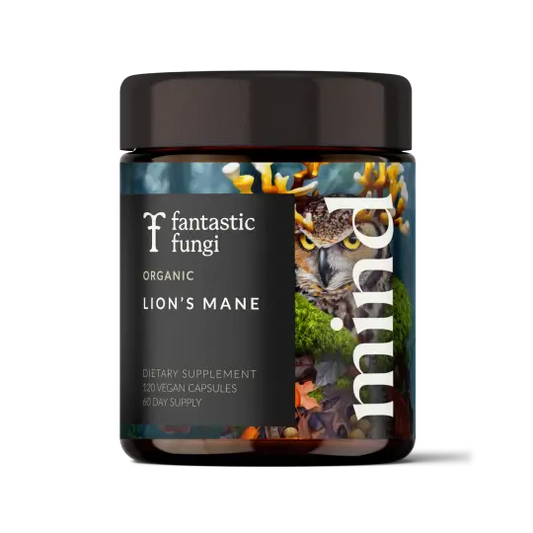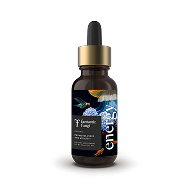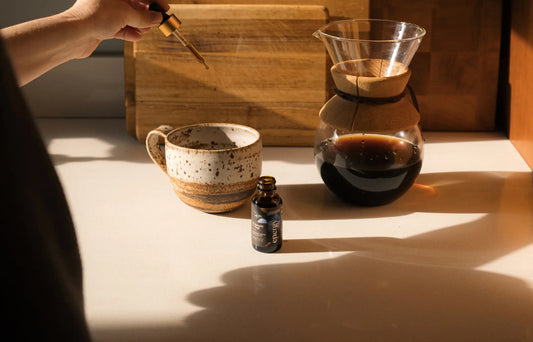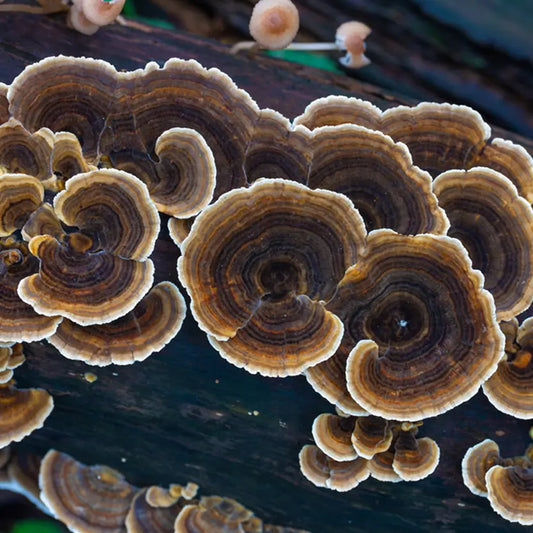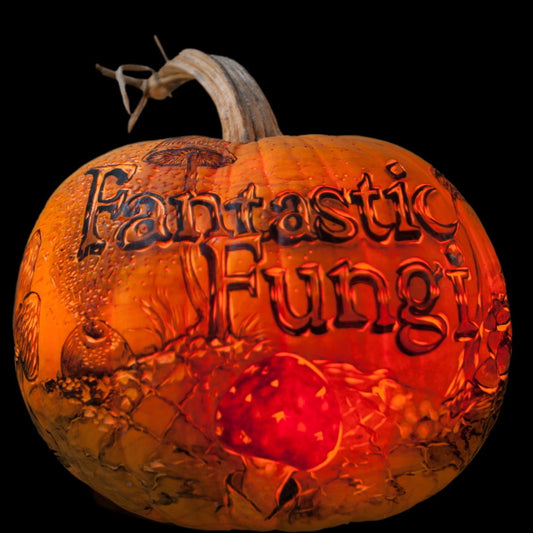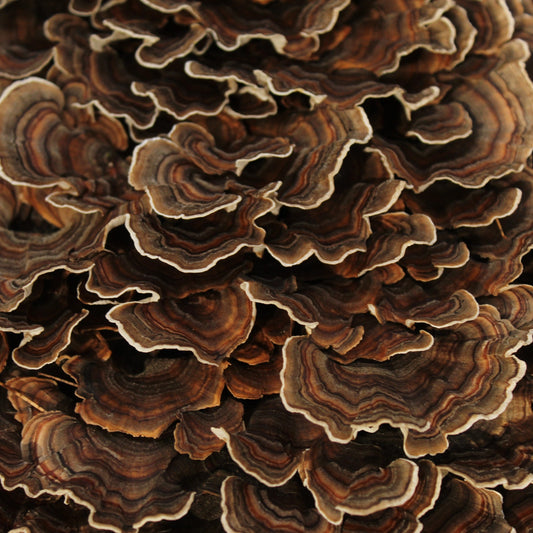
Why is Turkey Tail One of the Most-Studied Mushrooms on the Planet?
Latin name: Trametes versicolor
Formerly also known as: Coriolus versicolor
Common names: yun zhi or cloud fungus (in Chinese); kawaratake or mushroom by the river bank (in Japanese)
Habitat: widely found across North America, Asia and Europe
Common and traditional uses: immune health, antioxidant support, healthy cholesterol already within normal ranges, healthy liver support*
Fun fact: The species name versicolor stems from “of several colors” in Latin – fitting since this mushroom comes in many colors around the world!
Head into the woods – or even a park – near where you live (no matter where that may be) and look for dead trees and fallen logs. Chances are good that you’ll spot mushrooms growing in overlapping clusters, with concentric rings of color gradients. Chances are also good that these are Turkey Tail mushrooms, one of the best-known and ubiquitous mushrooms in the world. (But don’t be a turkey! Always be 100% certain before you forage them, as there are many “false” Turkey Tails out there. Thankfully, the look-alikes are not toxic.)
Where Turkey Tail is mentioned, superlatives usually follow. All fungi are fantastic, but this one is especially so. A quick search of the research on this mushroom (and the extracts PSK and PSP) yields over 100 pages of results (and well over 1,000 studies, analyses and trials, from one database).
Keep reading to learn about 10 things that make Turkey Tail mushrooms so fascinating!
10 Things to Know about Turkey Tail Mushrooms
- Beta-glucans are the best-known active compounds in mushrooms, and Turkey Tails have one of the highest percentages (over 50%)!
- Turkey Tail likes dead and dying wood, especially hardwood trees in damp areas. Widely found in North America, Asia and Europe, they are found on almost all continents.
- Turkey Tails are striped, and they pop up in shades of brown, white, gray and blue, with a white underside. You may also notice tiny spores.
- This mushroom has a deep history in both Traditional Chinese Medicine as well as Native American herbalism.
- Much of the research has been on two well-known protein-bound polysaccharides found in Turkey Tails: Krestin (PSK) and Polysaccharide Peptide (PSP).
- Turkey Tails are not mushrooms you’ll find on the dinner table. They are quite fibrous and need to be extracted in some way before they can be consumed. Think of it like this: If the compounds in a tender mushroom like Shiitake or Oyster are under lock and key, then Turkey Tail requires biometric screening to access the good stuff!
- You won’t find Turkey Tail in the produce aisle, but you can easily find Turkey Tail supplements. This fantastic mushroom is featured in our Protect Capsules, Immunity Elixir, Energy Elixir and Gratitude Elixir.
- These mushrooms are thin (the genus name Trametes is a nod to this quality) and flexible when fresh but brittle and easily broken when dried.
- If you are lucky enough to have Turkey Tail mushrooms on hand, you can simmer them into a tea or make a stock. Add them to soups in winter, too.
- Leave behind Turkey Tails that have moss growing on them or have a green, murky film.
Photo credit: Simone Wessels-Bloom
Additional source: Hobbs L.Ac., AHG, Christopher. Christopher Hobbs's Medicinal Mushrooms: The Essential Guide. Storey Publishing, LLC.
